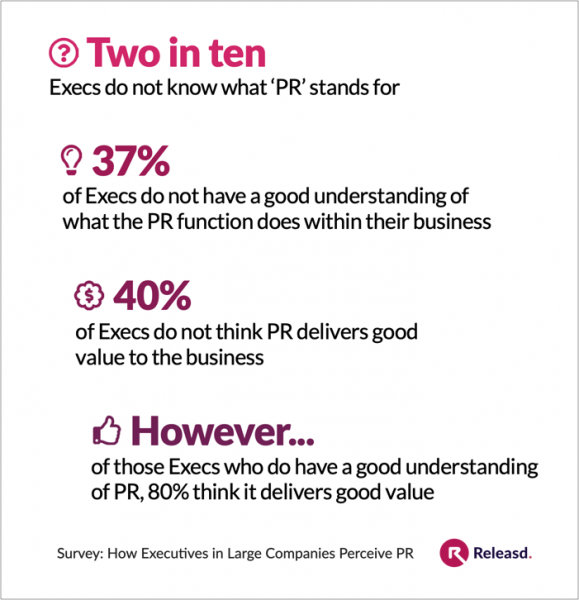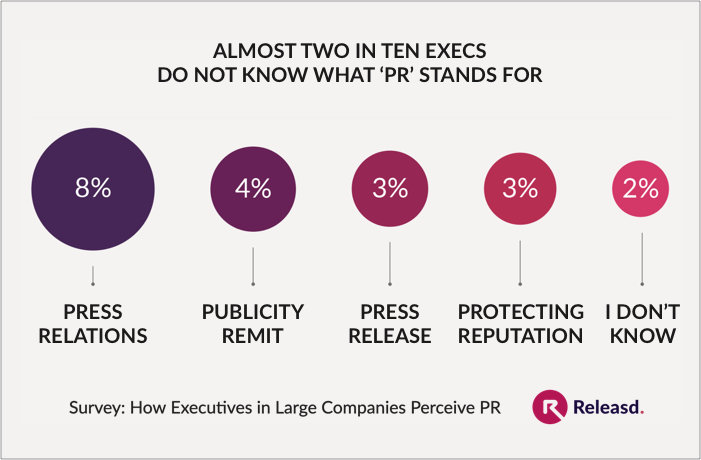
When we asked 300 Senior Managers, Directors, and CXOs in large companies what they thought of their PR teams, their responses were concerning and encouraging in equal measure.

● 20% of Executives do not know what PR stands for
● Four in ten do not have a good understanding of what the Comms function does within their own business
● Four in ten don’t think PR delivers good value to the business
● However - of the Execs who did have a good understanding of PR, a whopping 80% also thought it delivered good value
For the first time, we now have evidence that helping Execs understand how PR works leads to better perceived value.
So, what can we do to help Execs better understand (and therefore value) PR?
We’ve watched many highly valued in-house PR teams in action and they tend to share some common traits. Here are our top five recommendations:
1. Help other teams do their jobs more effectively
PR teams can win advocates across the organisation by helping others leverage the results of their work.
For example, we’ve seen PR teams deliver greater commercial value by providing customer-facing divisions with relevant coverage in a timely manner, which is used to engage prospects and clients.
2. Curate the coverage that’s shared with Execs
Traditionally, the industry has attempted to justify its existence by pointing a firehose of coverage at busy stakeholders. To help Execs quickly see what really matters, we recommend showcasing only the most relevant and impactful pieces of work, leaving the rest on the cutting room floor.

3. Focus on context
Many of our clients tell us that the ‘coverage report’ is dead. Scans, screenshots and circulation figures alone have not done a great job of convincing leadership that PR deserves a seat at the highest level. The solution is to focus on specific examples where the work done by the PR team has directly helped the business achieve its strategic objectives.
4. Simplify metrics
Many PR teams compensate for the lack of a single magic metric by sharing a multitude of graphs and charts. This can easily overwhelm busy Execs.
Our advice is to carefully pick a handful of simple metrics - we recommend around four - clearly describe what they are and why they are relevant to the business, and present them in the simplest way possible.
5. Consider the medium of delivery
Even if we follow the steps above, great work will fall on deaf ears if delivered in a cluttered email, bulky PDF of uninspiring PowerPoint. Execs are simply too busy to engage with it. Showcasing the results of PR in a visual and digestible way is the vital final step for PR teams looking to educate their stakeholders and, in doing so, demonstrate the value that they provide to the business.

-------
The full report, How Executives in Large Companies Perceive PR, can be downloaded for free at http://releasd.com/execs
To create much more concise and impactful PR activity reports, visit releasd.com.
Follow Releasd on LinkedIn or @teamreleasd.
